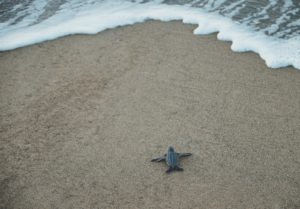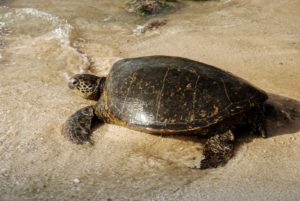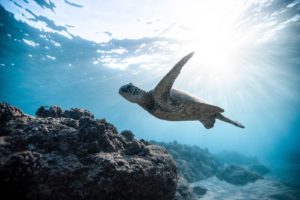Cooperating Volunteers has two volunteer programs available in Costa Rica for sea turtle rescue. One Of them takes place on the Pacific Side, which is located in Corcovado and Montezuma. The other program is located on the Caribbean side, in the Limon area.
This volunteering consists of protecting turtles and monitoring the beaches so that no one disturbs the nesting of these animals. During the spawning season, we will help with the registration of the female turtles, account of these turtles and the sizedata of these species will be taken. On the other hand, it will also help to disseminate the importance of caring for and protecting the environment and the relevance of recycling. In Addition, beach cleaning activities will also be carried out so that the turtles can nest in the best possible conditions.
Another essential part will be the surveillance of the beaches during the night and day, with the aim of preserving the eggs and preventing predators, such as raccoons, crabs, rats, snakes or some species of birds, from trying to eat the young.
Curiosities of international volunteering with turtles
Costa Rica Turtle Hatchling Baby turtles are very fragile and have a lot of predators. Turtles are endangered from before they are born, as some animals try to eat their eggs by digging into the earth, which is why beach surveillance is so important. On the other hand, it is still relevant to control these hatchlings when they have already hatched and are heading out to sea, because at that time they also have many predators. About 1 in 1000 turtles that manage to hatch will reach adulthood, i.e. only 0.1%. For this reason, the work of caring for, helping and monitoring this species is crucial.
The species of turtles that usually lay their eggs in Montezuma are olive ridley and hawksbill turtles, which have a journey of about 10 meters to the place where they usually lay their eggs. This site is usually at the end of the beach, before the vegetation begins. In some shelters they also protect the eggs by putting them inliving places to avoid being eaten by predators. In this way, they ensure that no animal can harm them.
Hundreds of turtles arrive in Costa Rica each year to lay their eggs. The Species that nest on its shores are: the green turtle, the olive ridley turtle, the leatherback turtle, the loggerhead turtle and the hawksbill turtle. The First three lay their eggs on the Pacific Coast, among them is the leatherback turtle, which is the largest sea turtle inexistence. It can reach a height of 2.2 meters and weigh 700 kg. On the other hand, hawksbill, green, leatherback, and loggerhead turtles nest on the Atlantic coast, therefore, some species nest on both coasts.
How many eggs does a sea turtle lay?
On average, a sea turtle lays 110 eggs per nest, and they make between 2 to 8 nests preseason. Depending on the species, the number of eggs varies, for example: the hawksbill turtle lays an average of 200 eggs per nest, almost double the average of other turtles. These eggs are small, resembling a ping-pong ball, are white, and have a soft shell.
Did you know that the sex of turtles is determined by the temperature of the sand? That’s right, the temperature of the sand in which the eggs are incubated affects the sex of the eggs. When the temperature is higher, females are more likely to be born, while when thesand is not so warm, males are usually born. Due to climate change, the number of females has increased considerably in some turtle species, further endangering the survival of this species.
When is the spawning season?
Depending on the species of turtle and the place where it nests, the spawning season is different, for example: the spawning period of the leatherback turtle on the Pacific coast is from November to March, while on the Caribbean coast it is between the months of March to June.
In addition, the lunar cycle also influences, on days close to the full moon there are more turtles that approach the coast to nest and they usually do so at night. Eggs hatch when the ambient temperature is lower. They are guided by the moonlight that reflects off the sea, this makes the hatchlings follow this light and can reach the water. This process is usually done ingroups, since they are more likely to be caught by a predator.
I’m sure you’ve really wanted to do an international volunteering experience like the one we’re talking about. Don’t think twice and travel to Costa Rica to volunteer with turtles!







